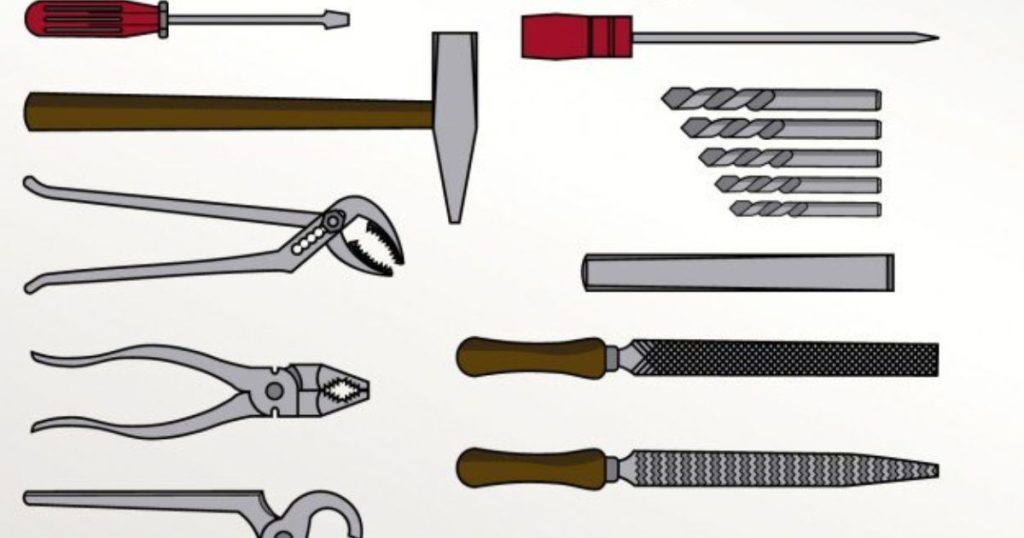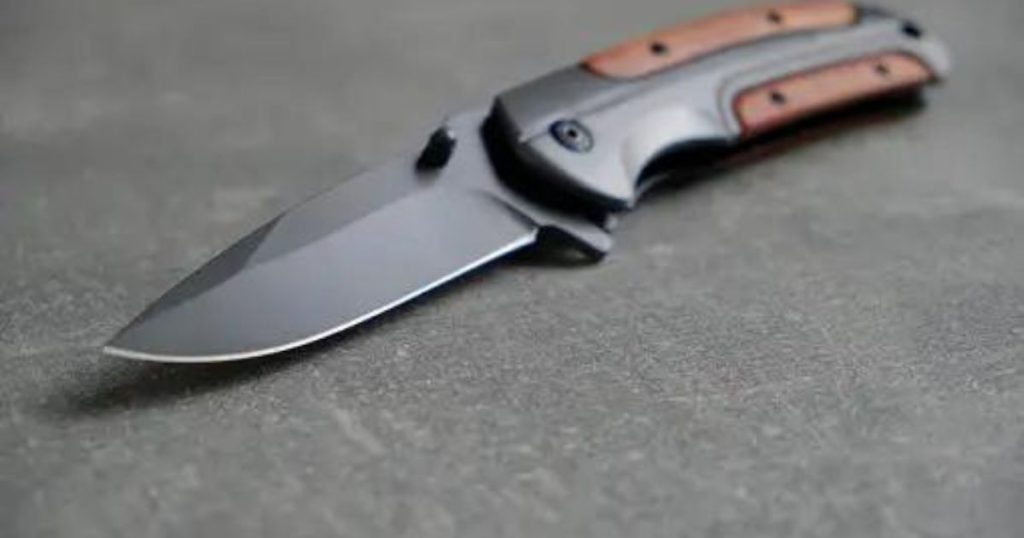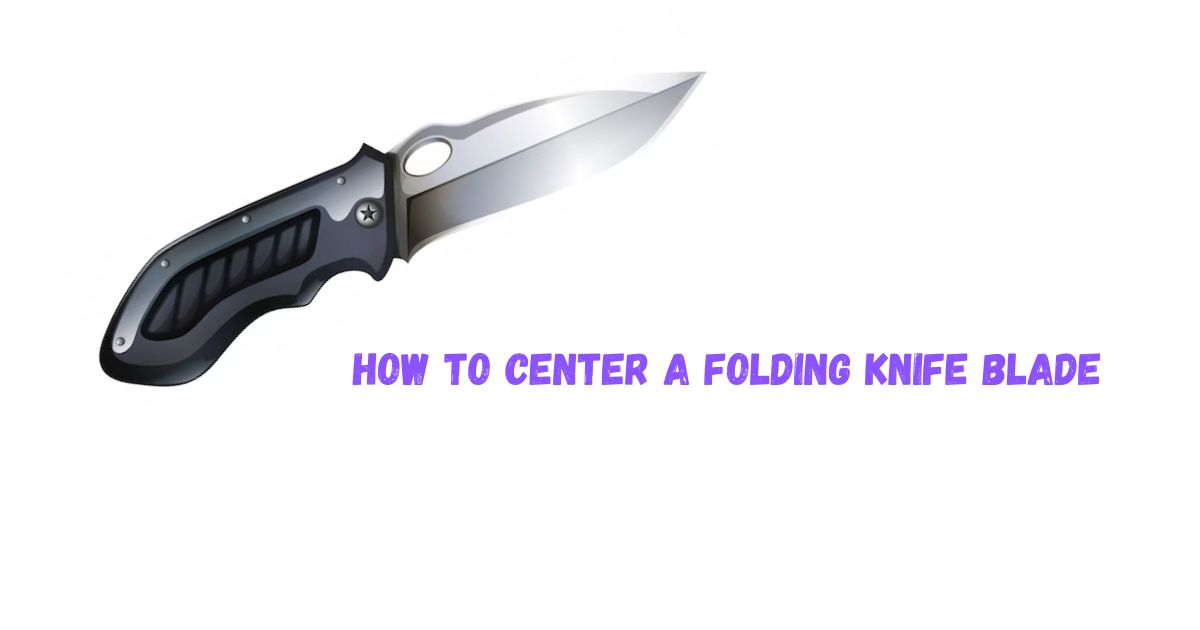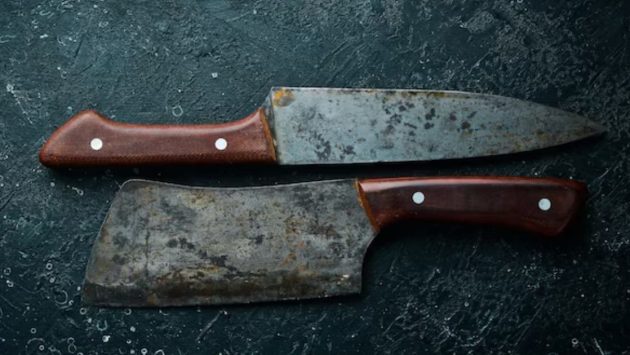Perfectly Aligned: A Guide on How to Center a Folding Knife Blade
Table of Contents
ToggleIntroduction:
The art of keeping and improving a folding knife goes beyond its arrival; it’s about confirming the blade is effortlessly centred. A centred blade not only improves the beautiful application of the knife but also plays a central role in its functionality and safety. Whether you’re an experienced knife fan or a beginner looking to explore the world of knife care, this complete guide will walk you through the step-by-step development of how to centre a folding knife blade.
Importance of a Centered Blade for Performance and Safety:
Here’s why achieving a centred blade is crucial for both optimal performance and safety:
Enhanced Cutting Efficiency:
A blade that is perfectly centred ensures an even distribution of force during cutting tasks.
Improved alignment reduces friction, allowing the blade to move smoothly through materials with less resistance.
Extended Blade Lifespan:
Misalignment can lead to uneven wear on the blade edge, reducing its lifespan.
A centred blade minimizes the risk of premature dulling and maintains a sharper edge over time.
Consistent Locking Mechanism:
The locking mechanism of a folding knife relies on precise alignment for optimal engagement.
A centred blade contributes to a secure lockup, preventing accidental closures and enhancing overall stability.
Reduced Blade Play:
Blade play, or lateral movement, can compromise the integrity of the knife and pose safety risks.
Centering the blade helps minimize blade play, ensuring a more secure and reliable tool.
Safe Handling and Ergonomics:
A well-centred blade contributes to a balanced knife, promoting safer and more ergonomic handling.
Balanced knives are easier to control, reducing the likelihood of accidents during use.
Ease of Deployment:
Proper centring facilitates smooth and consistent blade deployment.
Quick and reliable deployment is essential in situations where a swift response is needed.
Aesthetic Appeal:
Beyond functionality, a centred blade enhances the overall aesthetics of the folding knife.
A visually aligned blade reflects attention to detail and craftsmanship, appealing to both collectors and users.
User Confidence:
Knowing that the blade is centred instills confidence in the user.
Confidence in a tool is essential, especially outdoors or in emergencies where a reliable knife is crucial.
.
List of Necessary Tools for Centering a Folding Knife Blade:

- Screwdriver Set:
Phillips and flathead screwdrivers in various sizes to match the screws on the knife.
- Torx Screwdriver Set:
Torx bits or drivers, especially if the folding knife uses Torx screws for disassembly and adjustments.
- Hex Key Set:
Hex keys or Allen wrenches for knives with hexagonal or Allen-type screws
- Pliers:
Needle-nose pliers for manipulating small parts or making fine adjustments.
- Bench Block or Soft Work Surface:
A stable surface to disassemble and reassemble the knife, preventing damage to the blade or other components.
- Cleaning Supplies:
Solvent, or lubricant, is used for cleaning and maintaining the knife components.
- Microfiber Cloth or Q-Tips:
Precision cleaning tools for removing debris and lubricant from hard-to-reach areas.
- Magnifying Glass or Loupe:
Optional but useful for inspecting small parts and assessing blade centring with greater detail.
- Tweezers:
Fine-tipped tweezers for handling small parts during disassembly and reassembly.
- Shims:
Thin pieces of material (e.g., brass or plastic shims) to adjust and fine-tune the blade centering.
- Threadlocker:
Optional but can be used to secure screws in place after adjustments.
- Rubbing Alcohol:
For cleaning and degreasing parts before reassembly.
- Paper or Plastic Spacer:
A non-abrasive spacer to protect the blade finish during adjustments.
- Light Source:
A well-lit workspace or a small flashlight to see the components and assess blade alignment.
- Gloves:
Optional, but wearing gloves can prevent fingerprints and protect the knife’s finish during handling.
- Notepad and pen:
To take notes on adjustments made and their impact on blade centring.
What type of knife construction ensures optimal centering?
Understanding the knife’s construction is paramount for effectively centering the blade. Here’s why this knowledge is crucial:
Diverse Construction Methods:
Folding knife blades come in various designs, each with its own unique construction method. Knowing how your specific knife is assembled enables you to disassemble and reassemble it without causing damage.
Identifying Pivot Mechanisms:
Different knives employ distinct pivot mechanisms, such as washers, bearings, or bushings. Understanding the type of pivot used in your knife aids in making precise adjustments to achieve optimal centring.
Locating adjustment points:
Knowing the internal structure helps you identify the points where adjustments can be made. Whether it’s adjusting the pivot screw tension or shimming certain areas, understanding the construction guides you to the right adjustment points.
Understanding Tolerances:
Each knife is built with specific tolerances that affect its overall performance. Understanding these tolerances allows you to work within the knife’s design parameters and make adjustments that align with its intended functionality.
Preventing Damage During Disassembly:
Disassembling a folding knife blade without understanding its construction can lead to damage. Knowing where screws, pins, or other components are located helps prevent unintended harm to the knife’s structure.
Recognizing Potential Obstacles:
Some knives have intricate designs or internal features that may pose challenges during disassembly. Being aware of these potential obstacles allows you to navigate them carefully and avoid causing harm to the knife.
Customizing Adjustments:
Understanding the construction enables you to customize adjustments based on the knife’s design. This level of customization ensures that your efforts are tailored to the specific characteristics of your knife.
Applying proper lubrication:
Different knife constructions may require specific lubrication methods. Knowing the construction allows you to apply the right type and amount of lubricant for smooth blade movement.
Recognizing Materials Used:
Knowledge of the knife’s construction materials, such as blade steel and handle materials, can influence your approach to maintenance. Different materials may require specific care to maintain their appearance and functionality.
How do you know if a blade is off-center?

Now are the steps to help you classify if your knife blade is off-centre:
Visual Inspection:
Begin by visually inspecting the knife when it is closed. Look directly down the centerline of the closed blade and observe its position within the handle scales. A well-centred blade should be equidistant from both sides of the handle.
Check blade alignment with handle scales:
Open the knife slowly and observe how the blade aligns with the handle scales. It should maintain a consistent and centred position throughout the opening process. Any deviation from the centerline is an indication that the blade is off-centre.
Listen for rubbing or grinding:
Pay attention to any unusual sounds during blade deployment or closure. If there are rubbing, grinding, or scraping noises, it may indicate that the blade is coming into contact with one side of the handle, signalling an off-centre alignment.
Feel for Uneven Resistance:
Close and open the knife slowly while paying attention to the resistance felt during the motion. An off-centre blade may exhibit uneven resistance, with one side feeling tighter or looser than the other.
Check Blade Play:
Assess for any lateral movement or “blade play” when the knife is open. If there is noticeable side-to-side movement, it could indicate that the blade is not properly centred.
Test with paper:
Perform a simple paper test. With the knife open, try to slice through a piece of paper. If the blade is off-centre, it may cause the paper to tear unevenly or catch, indicating misalignment.
Illuminate with a Light Source:
Shine a light through the knife’s pivot area when it’s closed. This backlighting can reveal any asymmetry in blade alignment, making it easier to spot if the blade is off-centre.
Repeat the assessment:
Conduct these checks multiple times to ensure consistency in your observations. Sometimes, small deviations may be subtle and require scrutiny.
How do I center a folding knife blade?
Tools Needed:
Appropriate screwdriver or bit for the pivot screw.
Procedure:
Ensure Safety:
Ensure that the knife is clean and unloaded and that the blade is folded securely to avoid any accidental injuries during the adjustment.
Identify the pivot screw.
Locate the pivot screw on the handle of the knife. This is the central screw around which the blade pivots.
Choose the right tool.
Select the appropriate screwdriver or bit that fits the pivot screw snugly. Using the right tool helps prevent stripping the screw head.
Loosen the pivot screw.
Turn the pivot screw counterclockwise to loosen it slightly. Loosening the pivot screw allows for adjustment of the blade tension.
Repeat as necessary.
Continue adjusting and testing until the blade is perfectly centred. Take your time and be patient, as small increments are often more effective than large adjustments.
Check Blade Play:
As you adjust the tension, pay attention to blade play. The goal is to find the right balance that centres the blade without introducing excessive play. If you notice excessive play, consider adjusting the tension slightly.
Final Checks:
Once you achieve optimal centring and satisfactory tension, tighten the pivot screw securely. Ensure that the blade opens and closes smoothly without any grinding or resistance.
Test for sharpness:
After securing the pivot screw, check the sharpness of the blade. Sometimes, adjustments can affect the blade’s edge alignment.
Apply thread locker (optional):
If desired, you can apply a small amount of thread locker to the pivot screw to prevent it from loosening over time. Use thread locker sparingly, as it may make future adjustments more challenging.
What is blade play, and what are its effects on centering?
Folding knife labde play, also known as knife play or blade shake, refers to the unwanted programming or play of the blade inside the grip of a folding knife. This drive ensues in a side-to-side way and is classically experiential when the blade is fully long and locked in an open place. Blade play is measured as a class issue and can give and take the act of safety.
There are two main types of blade play:
Horizontal Play (Side-to-Side):
This occurs when the blade moves from side to side when locked open. Excessive horizontal play can make the knife feel less secure and may affect precision during use.
Vertical Play (Up-and-Down):
Vertical play involves the movement of the blade in an up-and-down direction when locked open. While less common than horizontal play, vertical play can still impact the knife’s stability and performance.
Effects of Blade Play on Centering:
Compromised Locking Mechanism:
Blade play can compromise the integrity of the locking mechanism. Excessive play may prevent the lock from fully engaging, leading to reduced overall stability and safety during use.
Decreased Precision:
When a blade exhibits play, it can affect the precision of the knife during cutting tasks. The lateral movement may cause the blade to deviate from the intended cutting path, resulting in less control and accuracy.
Accelerated Wear:
Blade play can accelerate wear on the pivot area, handle scales, and other components. Repeated lateral movement can lead to increased friction and stress, potentially shortening the lifespan of the knife.
Safety Concerns:
Excessive blade play raises safety concerns. A knife with significant play may be more prone to accidental closures or unexpected movements, posing a risk to the user.
Difficulty in Centering:
Attempting to centre a blade becomes more challenging when there is blade play. The movement of the blade can interfere with adjustment attempts, requiring careful tuning to address both the play and achieve optimal centring.
What are common mistakes in the centering process?
Achieving a perfectly centered blade in a folding knife can be a delicate process, and certain common mistakes may hinder your efforts. Here are some frequent errors to watch out for during the centering process:
Over-tightening the Pivot Screw:
Mistake: Tightening the pivot screw excessively can lead to increased friction and hinder the smooth movement of the blade.
Solution: Gradually tighten the pivot screw while regularly checking blade centering until the desired alignment is achieved. Avoid over-tightening to prevent unnecessary stress on the components.
Neglecting Blade Play:
Mistake: Focusing solely on centering without addressing any blade play (lateral movement) can result in an unstable knife.
Solution: While adjusting the pivot screw for centering, pay attention to blade play. Strike a balance between optimal centering and minimal, acceptable blade play.
Ignoring Other Components:
Mistake: Overlooking the role of washers, bushings, or bearings in blade centering.
Solution: Ensure that these components are clean, undamaged, and properly seated. Lubricate them appropriately to contribute to smooth blade movement and centering.
Misalignment During Reassembly:
Mistake: Incorrectly aligning the components during reassembly can impact blade centering.
Solution: Take your time to align washers, bearings, and other components properly when reassembling the knife. Carefully follow the manufacturer’s guidelines.
Using the Wrong Tools:
Mistake: Using improper or incorrectly sized tools for disassembly and adjustment can lead to damaged screw heads or components.
Solution: Use the right tools, such as the correct screwdriver or bit, to avoid stripping screws or causing harm to the knife during disassembly and adjustment.
Failure to Clean Thoroughly:
Mistake: Neglecting to clean all components thoroughly before lubrication can result in ineffective adjustments.
Solution: Clean each part meticulously to remove dirt, debris, and old lubricant. A clean surface ensures proper lubrication and contributes to achieving optimal centering.
Inadequate Lubrication:
Mistake: Applying too much or too little lubricant can affect blade movement and centering.
Solution: Use an appropriate amount of high-quality lubricant and distribute it evenly. Wipe away excess lubricant to prevent attracting dirt.
Not Addressing Wear or Damage:
Mistake: Failing to identify and address any wear, damage, or irregularities in components.
Solution: Inspect all parts for signs of wear or damage. Replace any worn-out components to ensure proper blade centering and overall knife functionality.
Impatience:
Mistake: Rushing the centering process without careful adjustments and checks.
Solution: Take your time, make small adjustments, and regularly assess blade centering to achieve the best results.
Conclusion
In conclusion, achieving a perfectly centered blade in a folding knife is a meticulous yet rewarding process that requires careful attention to detail. By understanding the knife’s construction, identifying common mistakes, and employing proper techniques, enthusiasts can elevate their maintenance skills.
The importance of optimal blade centring extends beyond aesthetics, impacting the knife’s performance, longevity, and safety. Regular maintenance, lubrication, and attention to potential issues such as blade play contribute to a reliable and well-functioning folding knife.
Embracing this comprehensive approach ensures that your knife remains a precision tool, reflecting not only your craftsmanship but also your commitment to maintaining it at its best. Whether you’re a seasoned collector or a novice, the journey to a perfectly centered blade is a fulfilling endeavor that deepens your appreciation for the art of knife maintenance.
FAQS
Q: Why is it important to have a centered blade in a folding knife?
A: A centered blade ensures even distribution of force during cutting, enhances stability, and contributes to the knife’s overall performance and longevity. It also minimizes the risk of uneven wear on the blade edge.
Q: Can I center the blade without disassembling the knife?
A: While minor adjustments can sometimes be made without full disassembly, achieving optimal centering often requires access to the pivot area. Disassembly allows for a more thorough adjustment and maintenance process.
Q: What tools do I need to center a folding knife blade?
A: Essential tools include screwdrivers or bits for disassembly, a Torx set or hex keys, pliers, shims, lubricant, and a soft work surface. The specific tools required may vary based on the knife’s design and construction.
Q: How often should I check and adjust the centering of my folding knife blade?
A: The frequency of checks depends on usage, but regular inspections, especially after heavy use or exposure to challenging environments, are recommended. Adjustments may be needed when blade centering is noticeably off or when blade play develops.
Q: What should I do if the blade play persists even after adjusting the pivot screw?
A: Persistent blade play may indicate other issues, such as worn washers or damaged components. Check for wear, clean the components thoroughly, and consider replacing any damaged parts to ensure proper blade centering and stability.




